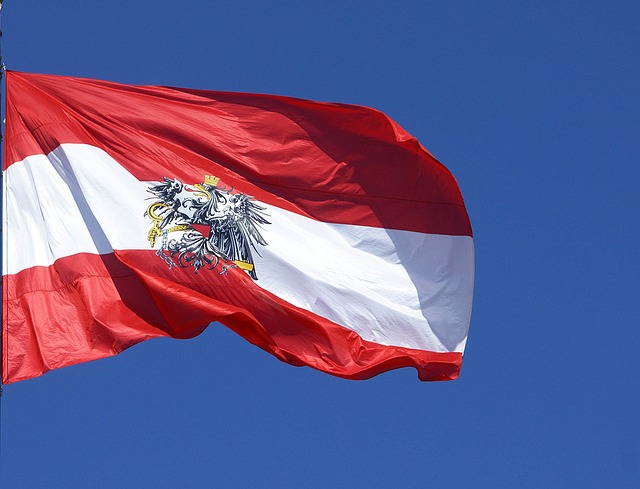November 28, 2022
UniCredit Bank Austria analysis:
Increased energy costs weighing heavily on domestic economy
- High energy costs significantly impacting energy-intensive sectors such as aviation and chemical, paper and steel industries, responsible for 45% of commercial energy consumption
- First three weeks of October 2022 see natural gas and electricity in Austria costing an average EUR 150 and EUR 190 per megawatt hour, compared to equivalent of just EUR 23 and EUR 64 for gas and electricity per megawatt hour in US
- Less energy-intensive production and service industries primarily affected by second-round effects triggered by high energy costs
- Overall energy expenditure in industrial sector more than quadrupled since 2019, up by around EUR 16 billion
- Increased need for public support measures due to potential loss of competition triggered by high energy prices
In the first three weeks of October 2022, natural gas cost around EUR 150 per megawatt hour in the Austrian wholesale market, an increase of 900% compared to 2019, while electrical energy cost EUR 190 per megawatt hour, an increase of 400%. In comparison, natural gas in the US only cost the equivalent of EUR 23 per megawatt hour, and electricity just EUR 64, in October 2022. In the same period, prices for crude oil and crude oil products in Austria were considerably lower, but were still up between approximately 60% and 130% depending on the product.
“Almost all companies are certainly feeling the effects of high energy costs, and not only in sectors using above-average amounts of energy such as aviation and the chemical, paper and steel industries”, says UniCredit Bank Austria Economist Günter Wolf. In 2019, these four industries recorded energy usage of significantly more than 25 terajoules per EUR million of added value compared to the industry average of just under 8 terajoules per EUR million of added value. Overall, these sectors account for 45% of Austria’s total commercial energy consumption.
Second-round effects in less energy-intensive production and service sectors
As energy prices rise, the financial burden on companies dependent on products and services from particularly energy-intensive sectors in the form of intermediate goods is also growing. Higher prices are passed on to varying degrees, mainly depending on the specific competitive situation, and often only after some delay. Nevertheless, the second-round effects of rising energy prices can be significant as companies source greater numbers of products from more energy-intensive industries.
In addition to the production of food, plastics and building materials, the sectors particularly hit by these second-round effects include service sectors such as the hospitality and the catering industries, as well as retirement homes and nursing homes. For example, the food and beverage industry sources 61% of its intermediate goods from the ten most energy-intensive sectors (including products from its own sector, which are further processed at different stages of production). Agriculture provides just over half of the input, while the food industry supplies a third of the intermediate goods to the catering industry and another 12% to retirement and nursing homes.
Share of energy expenditure in food production revenues increased more than fivefold since 2019
The trends in energy expenditure in relation to revenues demonstrates how the burdens caused by high energy prices vary considerably between industries and at sector level. For example, in 2019 the chemical industry spent an average of 3% of its revenues on energy, while industrial gas manufacturers spent 15%. Energy expenditure amounted to just under 2% of revenues in the food industry, and over 4% in the mills division. However, energy bills have risen considerably across all sectors and likely in most divisions since 2019.
Assuming that the share of energy sources in energy usage has not changed, the financial burden has more than quadrupled on average across the industrial sector. In total, energy costs had risen by around EUR 16 billion, from 2% of revenues in 2019 to approximately 8% by the third quarter of 2022. Large, energy-intensive sectors such as the steel, chemical and building materials industries were not the only drivers of this. Energy expenditure in food production, for example, even grew at an above-average rate, rising from just under 2% to over 10% of revenues. The reasons for this are the high proportion of natural gas—over 50%—in the industry’s energy usage (compared to an average of 28% across the industrial sector in 2019) and the massive increase in gas prices.
In the services sector, energy costs have increased particularly sharply in the tourism sector as well as in transport: up by EUR 5.1 billion in the transport sector and by EUR 2.5 billion in the hospitality and catering sector. The fact that, in these two tourism-related sectors, the proportion of revenue spent on energy has increased from 3% to 15% over the past three years is partly due to the weak growth of the sectors’ revenues, which had still not reached the 2019 level by the middle of the year.
The field of information and communication is also one of the services sectors most affected by the rise in energy prices, with energy costs accounting for more than 3% of revenues. In 2019, this figure was still below 1%. The lack of growth in the publishing industry in particular is likely to have contributed significantly to the increase in the proportion of revenues spent on energy costs.
Potential loss of competition due to high energy prices
However, high energy consumption and rising energy prices do not necessarily lead to production restrictions and erosion of corporate earnings. The impact on companies depends on profit margins and the ability to pass on price increases to customers. In this respect, market power and the competitive situation on the market are crucial factors. The more exposed an industry is to competitors from countries where energy is cheaper, such as the US, the greater the loss of production and profits that can be expected. As already mentioned, during the first three weeks of October, natural gas cost an average equivalent of only EUR 23 per megawatt hour in the US, but as much as EUR 150 per megawatt hour in Austria. As a result, the relocation of production to cheaper locations must also be expected.
“Political support is definitely needed to secure the competitive position of very exposed sectors and to ensure the economic survival of smaller commercial businesses”, concludes Wolf. The estimate of energy costs for 2022 shows that, at least in the production sector, there are no industries where the proportion of revenue spent on energy costs is less than 3%, the limit set for the energy subsidy for companies.
Source: UniCredit Bank Austria
Legal Notice: The information in this article is intended for information purposes only. It is not intended for professional information purposes specific to a person or an institution. Every institution has different requirements because of its own circumstances even though they bear a resemblance to each other. Consequently, it is your interest to consult on an expert before taking a decision based on information stated in this article and putting into practice. Neither Karen Audit nor related person or institutions are not responsible for any damages or losses that might occur in consequence of the use of the information in this article by private or formal, real or legal person and institutions.






